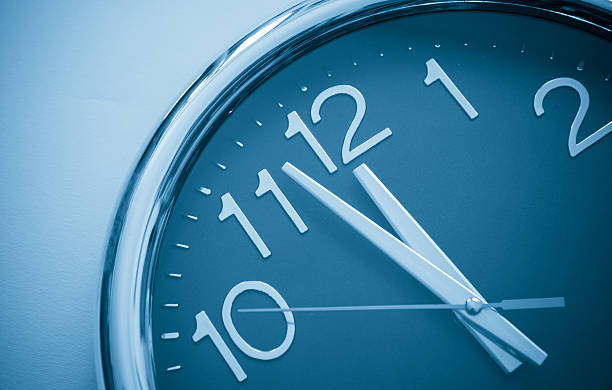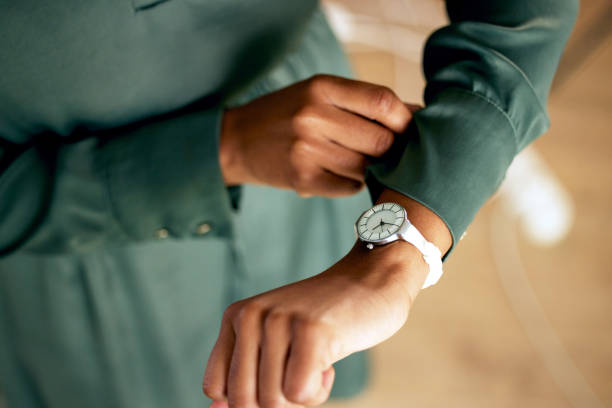The Fascinating History of Timekeeping Devices
Evolution of Timekeeping
Timekeeping is an essential aspect of human existence. From the ancient civilizations to the modern era, mankind has always sought ways to measure and track time. The quest for accurate timekeeping has led to the development of various devices and systems throughout history. In this article, we will delve into the fascinating history of timekeeping devices and how they have evolved over time.

Timekeeping Devices Timeline
The timeline of timekeeping devices is a tapestry woven with the technological advancements of different eras. Let's take a walk through time and explore some of the milestone inventions that have shaped our understanding and measurement of time.
The Sundial: Ancient Origins
The sundial is one of the earliest timekeeping devices known to mankind. Dating back to ancient Egypt and Mesopotamia, sundials were simple yet effective devices that used the position of the sun to indicate the time of day. They consisted of a flat surface with a raised object, called the gnomon, which cast a shadow that moved with the sun's movement. By observing the shadow, people could estimate the time.
Sundials were widely used in ancient Greece and Rome and became an integral part of daily life. They were often placed in prominent locations, such as temples and public squares, to provide a reference for timekeeping.

The Water Clock: A Clever Invention
As civilizations progressed, so did the need for more accurate timekeeping. The water clock, also known as the clepsydra, emerged as a significant advancement in time measurement. This device used the flow of water to mark the passage of time.
Water clocks were invented in ancient Egypt and later adopted by the Greeks and Romans. They consisted of a container with markings indicating the hours, and water was allowed to flow from a higher container to a lower one, which resulted in a steady and predictable motion. By measuring the water level in the lower container, people could determine the time.
The water clock allowed for more precise time measurement compared to sundials, as it was not influenced by weather conditions. However, it was not without its limitations. The flow of water needed to be regulated, and the clocks had to be constantly refilled. Nonetheless, they played a crucial role in various ancient societies for centuries.

The Mechanical Clock: A Revolution in Timekeeping
The mechanical clock, a significant breakthrough in timekeeping, emerged during the Middle Ages. Clockmakers in Europe developed intricate devices that employed a series of gears and weights to accurately measure and display the time.
The first mechanical clocks were large and required manual winding to maintain their operation. These clocks were often found in churches and monasteries, where the ringing of bells and the marking of religious hours were of utmost importance.
As technology advanced, so did the design and portability of mechanical clocks. The invention of the escapement mechanism and the introduction of the pendulum in the 17th century greatly improved accuracy. These advancements laid the foundation for the development of more compact and precise timekeeping devices.
The Pocket Watch: Timekeeping on the Move
The pocket watch was a game-changer in timekeeping. Dating back to the 16th century, pocket watches provided individuals with the ability to carry time with them wherever they went.
Initially, pocket watches were luxury items, primarily owned by the wealthy elite. They were handmade and finely crafted, often adorned with intricate engravings and precious metals. However, advancements in manufacturing techniques and mass production led to pocket watches becoming more affordable and accessible to the general public.
Pocket watches revolutionized timekeeping by allowing individuals to synchronize their activities and adhere to schedules more effectively. They became a symbol of status, punctuality, and refinement.
The Wristwatch: Timekeeping Made Convenient
With the advent of the 20th century came another significant innovation in timekeeping – the wristwatch. While wristwatches had been experimented with as early as the 19th century, it was not until the early 20th century that they gained widespread popularity.
Wristwatches were initially designed as practical timekeeping devices for military personnel during World War I. Soldiers found it more convenient to wear their watches on their wrists rather than fumble with pocket watches in the heat of battle. This led to the rise of wristwatches as a fashion statement and an essential accessory for both men and women.
Over time, wristwatches have evolved in design, functionality, and precision. The incorporation of quartz movements and the introduction of digital displays brought new levels of accuracy and convenience to timekeeping. Today, wristwatches are available in a variety of styles, from classic analog watches to high-tech smartwatches that can track not only time but also various aspects of our daily lives.
The Future of Timekeeping
As we look to the future, it is evident that the quest for precise timekeeping will continue. With advancements in technology, we are likely to witness the development of even more accurate and sophisticated timekeeping devices.
Atomic clocks, which use the vibrations of atoms to measure time, are already the gold standard for scientific research and modern infrastructure. These incredibly precise clocks are accurate to within a fraction of a second over millions of years.
Furthermore, the integration of timekeeping with wearable technology and the Internet of Things (IoT) opens up new possibilities for time synchronization and personalized time management.
In conclusion, the history of timekeeping devices is a testament to mankind's relentless pursuit of measuring time accurately. From the early sundials and water clocks to the mechanical clocks, pocket watches, and wristwatches, each invention has brought us closer to achieving precision in timekeeping. As technology advances, the future of timekeeping holds immense potential for even greater accuracy and convenience.





